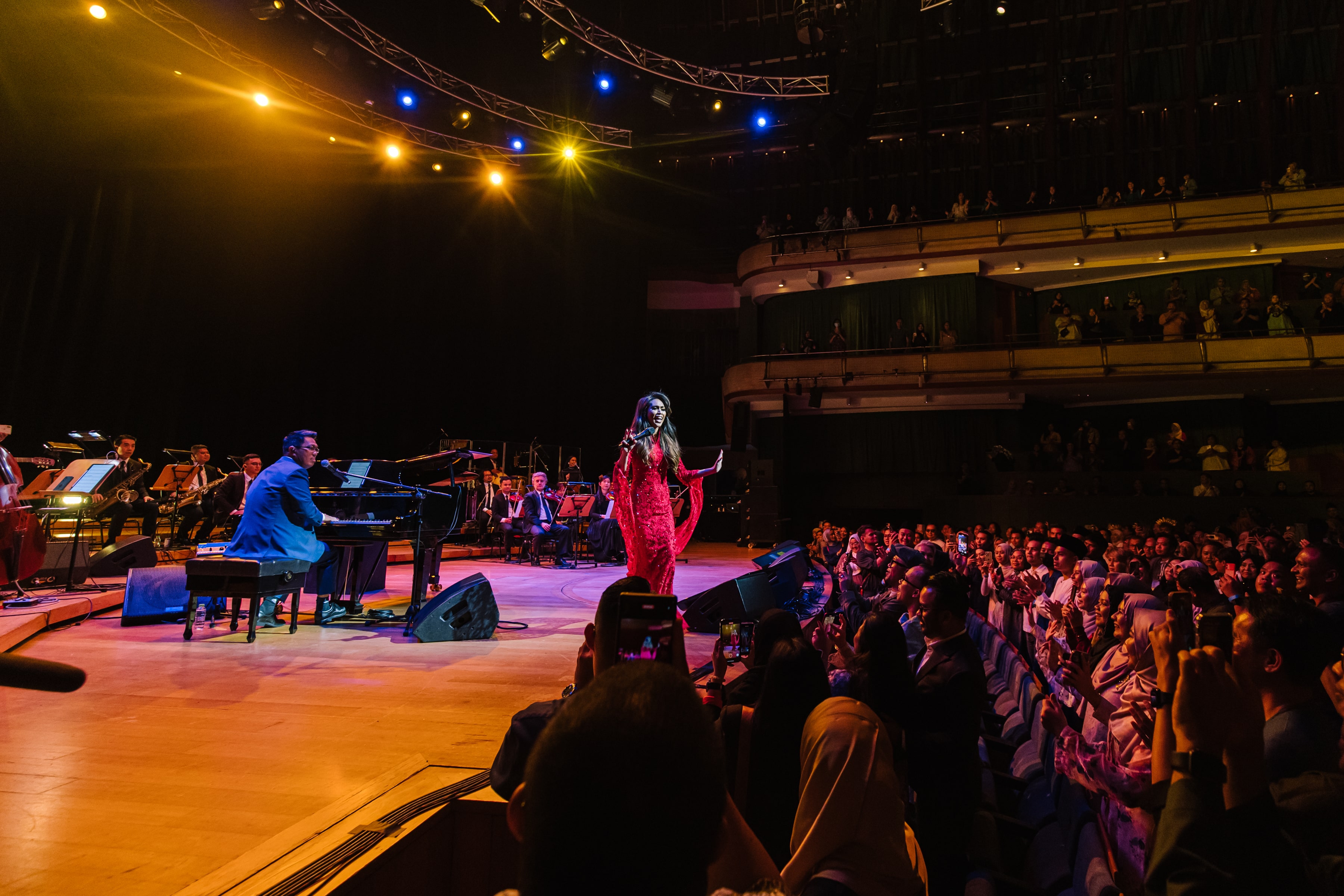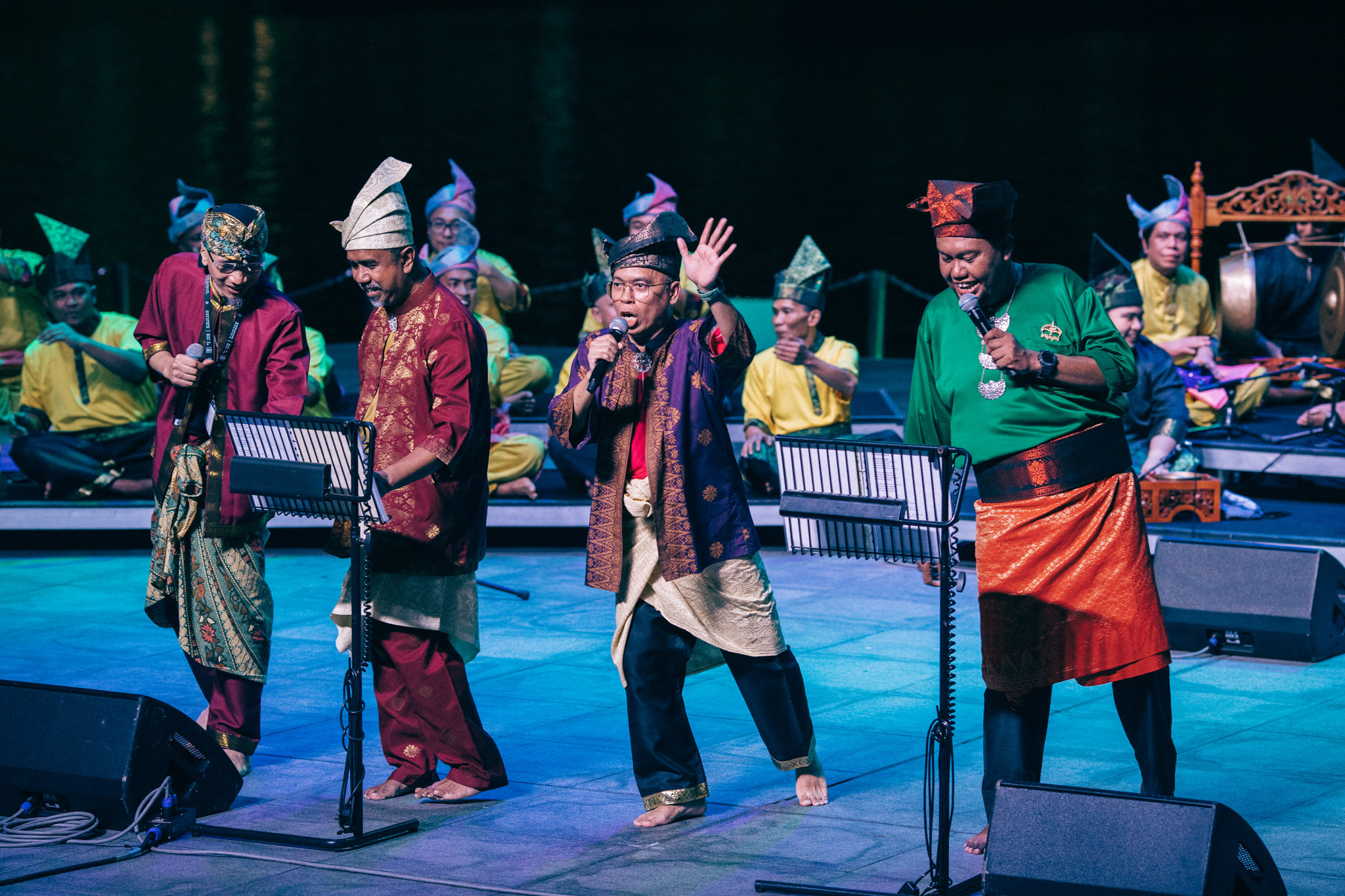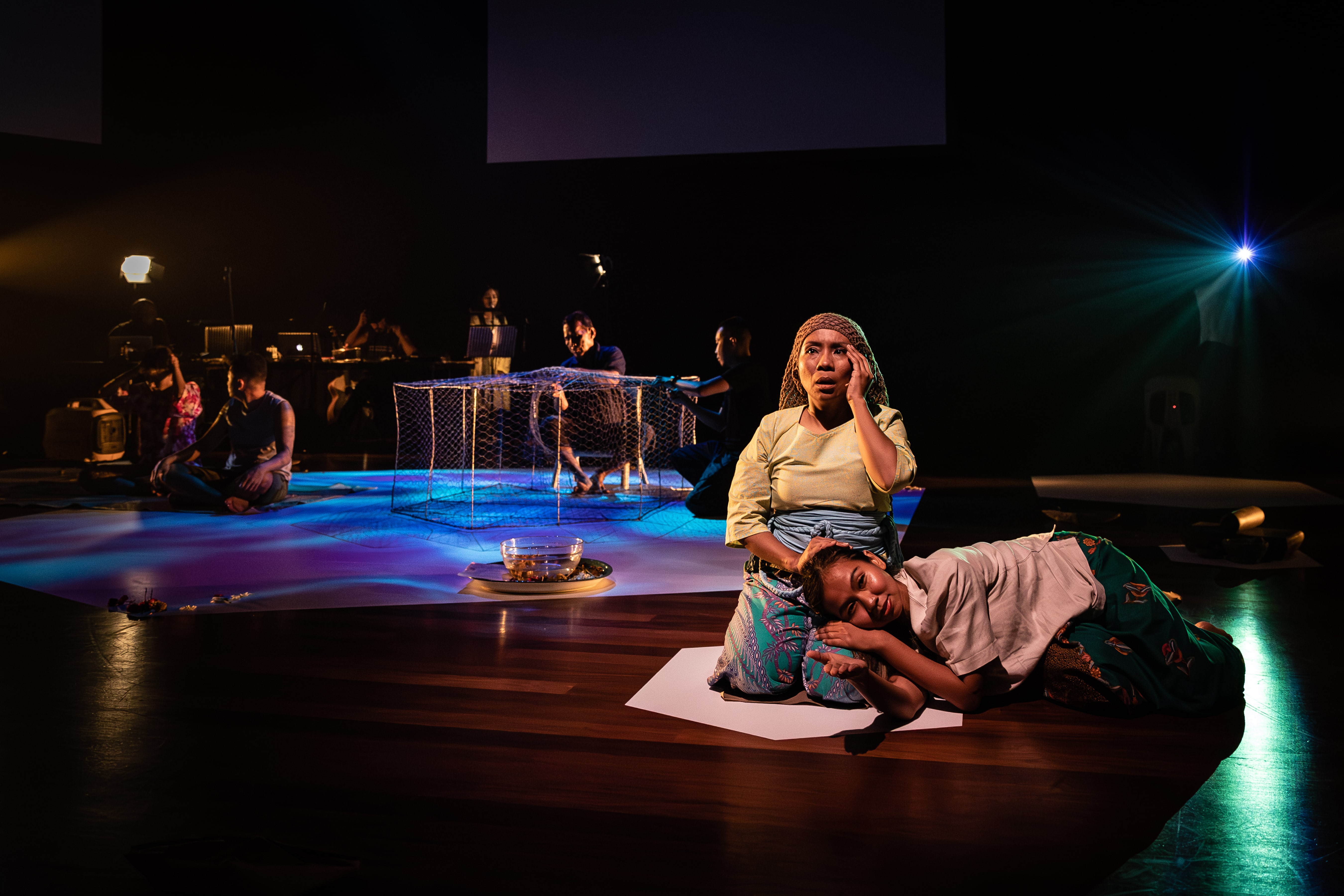Malay Identity in a Contemporary World: Pesta Raya 2023
Where traditional art forms and contemporary expressions unite, FATIN HUMAIRA discovers the vibrancy of Malay culture at Pesta Raya 2023.
BY
Fatin Humaira
Events Manager
Hype Issue #57
Published on
June 19, 2023
This year’s Pesta Raya – Malay Festival of Arts which took place between May 18 to 21, brought a lineup of programmes delving into the stories that preserve the cultural heritage of the Nusantara (Malay Archipelago).
“One of the oldest art forms, storytelling, is a powerful tool that is used to preserve and share memories, culture, and tradition. Stories are a way for us to better connect with the world we are in. Told often, these tales become lessons or a source of inspiration,” said Ms Hanie Nadia Hamzah, Producer at The Esplanade Co Ltd, in her producer’s message.

Konsert Belagu is Dayang Nurfaizah’s second sold-out show in Singapore after her first concert here in 2018. Photo by AlvieAlive, courtesy of Esplanade – Theatres on the Bay.
Dayang Nurfaizah, Malaysia’s R&B princess, performed a sold-out show during the festival. She preserves the essence of classic Malay music by recording her own versions of timeless Malay songs, hoping to inspire the younger generation to appreciate and uphold the essence of classic Malay music.
In an interview conducted in Malay with Berita Harian, Dayang, 41, said, “I want to reintroduce these classic Malay songs to the younger generation as it is part of our identity.”
She performed songs from her ninth solo studio album, Belagu, which means “to sing” in Sarawak Malay dialect. She also performed songs from her latest album, Belagu II, which incorporates traditional Malay genres like asli, joget, and zapin.
By performing classic Malay songs such as ‘Nak Dara Rindu’ from Malay movies like Bujang Lapok, she attracts younger audiences and ensures the relevance of Malay culture and music in the contemporary scene.
“When I see platforms that are popular among young people, such as Tiktok, and people use songs like ‘Umpan Jinak’ and ‘Ketipang Payung’ [which are] not just my version but also the original, that to me is such a positive growth for classic Malay music,” Dayang said.

Dayang recorded some songs from Belagu II with the world-renowned, Budapest Scoring Orchestra. Photo by AlvieAlive, courtesy of Esplanade – Theatres on the Bay.
Dikir Barat, a popular form of Malay entertainment, features a traditional choral ensemble that consists of the tok juara (lead vocalist), a tukang karut (jester and group leader), an awok-awok (chorus) and is supported by a percussion ensemble. Dikir Barat has been cherished throughout the years and continues to be prominent in Malay weddings and events.
Sri Teruna Jaya, a dikir barat group in Singapore performed classic tunes from the 80s and 90s at the DBS Foundation Outdoor Theatre at Esplanade. The multi-generational audience enjoyed themselves as the musicians performed Dikir Barat classics like ‘Aidilfitri Terkenang’.

Dikir Barat involves poetry, singing, music, and synchronised movement. Photo courtesy of Esplanade – Theatres on the Bay.
Liyana Batrisyia, 21, a spectator of the Nostalgia Dikir Barat performance, shared that some children of different races had joined the group on stage at the end of the show. Some tourists were also intrigued and stayed for the whole performance which she found heartwarming.
“It is nice seeing a community that continues to grow despite modernisation, and connects the young and old while still keeping its elements and stories of history and culture,” Liyana said.

Si Anak Seni (Malay culturist group) and Genbano (music ensemble) made a special appearance during the performance. Photo courtesy of Esplanade – Theatres on the Bay.
Navigating the issue of identity and loss of heritage through spoken word, storytelling, and expressive movement, Air Da Tohor is a theatre performance by Firdaus Sani and Asnida Daud that delves into the essence and vitality of the Orang Laut/Pulau.
“It’s a measure of our culture, leading into how the country sees us, how we are always placed at the peripheries of Malay subculture,” Firdaus, 34, told The Straits Times.
The showcase involves movements referencing islander practices as well as mantras to spotlight the traditions of the Orang Laut/Pulau communities. The local phrase ‘Air Da Tohor’ (The tide is low), is used by the Orang Laut/Pulau to signal the arrival of low tides during fishing activities.

Air Da Tohor involves four segments exploring mantras, maritime workmanship, food, and environmentalism. Photo by Bernie Ng, courtesy of Esplanade – Theatres on the Bay.
Other performances such as Sri Setia x Kicau Bilau breathed new life to a traditional Malay art form, wayang kulit.
“It was a unity between both traditional and contemporary Malay art forms which to me symbolises today’s cultural landscape,” said Iffah Qamilia, 19, a spectator.

Sri Setia x Kicau Bilau presented ‘Sirat Maharaja Buka Negeri’, which tells the story of a king in pursuit of a nation. Photo courtesy of Esplanade – Theatres on the Bay.
Pesta Raya 2023 highlighted the importance of preserving and celebrating Malay culture in the modern world. From the enchanting tunes of dikir barat to the thought-provoking expressions of Air Da Tohor, each showcase reminds us of the value of our cultural roots.
By embracing and celebrating Malay culture, we ensure its relevance in the contemporary landscape and allow us to pass down invaluable knowledge, stories, and practices to future generations.

Thanks, I have recently been looking for info about this subject for a while and yours is the greatest I have discovered so far. However, what in regards to the bottom line? Are you certain in regards to the supply?